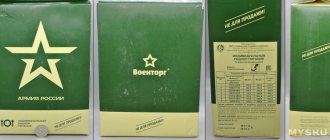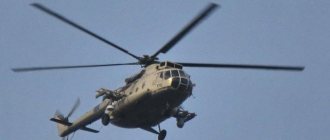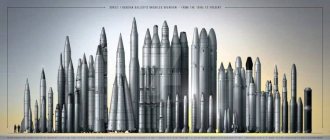The MiG 35 fighter is the latest multifunctional fighter, the most advanced representative of the MiG family. It belongs to the 4++ generation, which should surpass fourth-generation fighters in terms of combat qualities, and also successfully resist fifth-generation fighters in air battles.
The MiG-35 interceptor is a good alternative to fifth-generation aircraft, which are very expensive. In the Russian Air Force, the MiG-35 is considered as a transitional link between the 4th and 5th generations. The new airframe interceptor is a development of the magnificent Mig-29, which is where the price gain actually comes from, since the design has already been perfectly mastered in production. Deliveries of the MiG-35 fighter to the Russian Air Force began in 2014. The Russian Ministry of Defense intended to form at least two interceptor squadrons in 2020 .
History of creation
The MiG-35 interceptor began to be developed in the 2000s. And by 2010, 3 prototypes were already ready, which participated in air exhibitions and were tested.
The fighter was created on the basis of the famous MiG-29, production of the new aircraft was launched in a short time. Externally, the MiG-35 is very similar to its predecessor, but at the same time it received a completely new “stuffing”. First of all, this:
- lightweight airframe;
- modern avionics;
- Radar with AFAR;
- promising types of weapons that have not previously been offered for export;
- modern defense complex;
- engines with increased resource.
The new aircraft demonstrated excellent technical characteristics, including high speed, maneuverability, survivability, and advanced weapons. At the same time, the price of a MiG-35 flight hour turned out to be almost 2.5 times lower than that of its predecessor, the MiG-29.
Back in 2005, this fighter was called the MiG-29M/M2. The development of the MiG-35 was based on the achievements obtained during the implementation of the MiG 1.44 MFI program, which was led by Vladimir Barkovsky, director of the engineering center of the OKB. Mikoyan.
Negotiations on the supply of fighter jets to the armed forces have been ongoing since 2010, and by 2014 things had moved forward. The MiG-35 is included in the State Armament Program of the Russian Air Force until 2022.
Flight performance
Specifications
- Crew: 1 or 2 people (MiG-35/MiG-35D)
- Length: 17.3 m
- Wingspan: 11.99 m
- Height: 4.73 m
- Wing area: 42 m²
- Weight: empty: 11000 kg
- normal take-off: 17500 kg
- maximum take-off: 23500 kg
- fuel: 4800 kg
- Thrust: maximum: 2 × 5400 kgf
Flight characteristics
- Maximum speed: at ground level: 1400 km/h
- at altitude: 2400 km/h (M=2.25)
- without PTB: 2000 km
- at normal take-off weight:1,03
- at normal take-off weight: 468 kg/m²
Armament
- Cannon: 30 mm built-in gun GSh-30-1
- Hanging points: 10
- Combat load: 6500 kg
- Armament: URVV: short range: R-73
- medium range: R-27 and RVV-AE
Avionics
- Radar station with an active phased array antenna Zhuk-A: AFAR diameter: 688 mm (500 mm for export)
- Number of MRP: 1016 (680 for export)
- Weight: about 280 kg (240 kg for export)
- Volume: 0.275 m³
- Maximum detection range: aerodynamic target: up to 200 km (up to 148 km on export ones)
- ground target: up to 60 km
Tasks and goals
The MiG-35 multifunctional front-line aircraft was created to destroy ground, air and surface targets at night and during the day in simple and adverse weather conditions with passive and active electronic countermeasures from the enemy.
Main tasks of the MiG-35:
- interception of air targets;
- gaining air superiority;
- isolation of the battlefield;
- suppression of air defense systems;
- close air support;
- striking naval targets.
The main combat characteristics of the MiG-35D and MiG-35 aircraft compared to the MiG-29:
- super maneuverability;
- increased flight range;
- high combat survivability;
- increased reliability.
Participation of the MiG-35 in the Indian MMRCA tender
| Comparative characteristics of aircraft that took part in the Indian MMRCA tender | |||
| Name | Dassault Rafale | Eurofighter Typhoon | F-16IN Super Viper |
| Appearance | |||
| A country | France | Germany, Italy, Spain, UK | USA |
| Manufacturer | Dassault Aviation | Eurofighter GmbH | Lockheed Martin |
| Length | 15.27 m | 15.96 m | 15.03 m |
| Wingspan | 10.80 m | 10.95 m | 10.00 m |
| Wing area | 45.7 m² | 50.0 m² | 27.9 m² |
| Empty mass | 9,500 kg | 11,000 kg | 9,979 kg |
| Fuel weight (without fuel tank) | 4,700 kg | 4,996 kg | 3,265 kg |
| Combat load | 9,500 kg | 7,500 kg | 7,800 kg |
| Suspension points | 14 | 13 | 11 |
| Maximum take-off weight | 24,500 kg | 23,500 kg | 21,800 kg |
| Engine | 2 × Snecma M88 | 2 × Eurojet EJ200 | 1 × GE F110-132 |
| Maximum thrust | 2 × 50.0 kN | 2 × 60.0 kN | 1 × 84.0 kN |
| Maximum thrust afterburner | 2 × 75.0 kN | 2 × 90.0 kN | 1 × 144.0 kN |
| Max. speed at altitude | 1.8+ Mach | Mach 2.0 | Mach 2.0 |
| Combat radius | 1,800 km | 1,390 km | 550 km |
| Service ceiling | 17,000 m | 19,812 m | 18,000 m |
| Rate of climb | 305 m/s | 315 m/s | 254 m/s |
| Thrust-to-weight ratio | 1,13 | 1,18 | 1,10 |
| Controlled thrust vector | No | There is | No |
| AFAR radar | There is | No | There is |
| Cost (2011) | $85 – 124 million | $120 million | $50.0 million |
| Name | F/A-18E/F Super Hornet | JAS 39 NG(IN)] | MiG-35 |
| Appearance | |||
| A country | USA | Sweden | Russia |
| Manufacturer | Boeing Defense, Space & Security | Saab AB | RSK "MiG" |
| Length | 18.31 m | 14.10 m | 17.30 m |
| Wingspan | 13.62 m | 8.40 m | 12.00 m |
| Wing area | 46.5 m² | 30.0 m² | 38.0 m² |
| Empty mass | 14,552 kg | 7,100 kg | 11,000 kg |
| Fuel weight (without fuel tank) | 6,780 kg | 3,360 kg | 4,800 kg |
| Combat load | 8,050 kg | 5,300 kg | 6,500 kg |
| Suspension points | 11 | 10 | 10 |
| Maximum take-off weight | 29,937 kg | 14,300 kg | 29,000 kg |
| Engine | 2 × GE F414-400 | 1×GE F414G | 2 × RD-33MKV |
| Maximum thrust | 2 × 62.3 kN | 1 × 62.3 kN | 2 × 53.0 kN |
| Maximum thrust afterburner | 2 × 98.0 kN | 1 × 98.0 kN | 2 × 88.3 kN |
| Max. speed at altitude | Mach 1.8 | Mach 2.0 | Mach 2.25 |
| Combat radius | 722 km | 1,300 km | 1,000 km |
| Service ceiling | 15,000 m | 15,240 m | 17,500 m |
| Rate of climb | 228 m/s | n/a | 330 m/s |
| Thrust-to-weight ratio | 0,93 | 1,18 | 1,10 |
| Controlled thrust vector | No | No | There is |
| Radar with AFAR | There is | No | There is |
| Cost (2011) | $55.0 million | $48.0 million | ~$45.0 million |
Design features of the MiG-35
To increase the combat effectiveness of the fighter, its avionics were significantly improved. It is this that distinguishes the aircraft from other aircraft of the new unified MiG-29K/KUB and MiG-29M/M2 family. Moreover, the differences are of an evolutionary nature: the share of fifth-generation devices and systems increases from model to model.
In terms of the level of integration of technological solutions related to the fifth generation of fighters, the MiG-35 has no equal among its European analogues.
- The focus on electronics was possible thanks to the excellent aerodynamic concept of the MiG-29. When designing the MiG-35, it was possible to increase the internal fuel supply by 50%, as well as double the combat load. As a result, the MiG-35's armament and range were upgraded to the level of heavy fighters.
- The maximum take-off weight increased by 30%, reaching 23.5 tons. To maintain and improve flight performance, the design has undergone a number of improvements: for example, the structural strength has been increased and the load-bearing properties of the wing have been improved.
- The power plant has been updated. It was replaced with RD-33MK engines with a smokeless combustion chamber, increased thrust by 10%, longer service life and increased reliability. As an optional solution, modernized RD-33s are installed, with all-angle thrust vector deviation.
- The MiG-35 cockpit is equipped with a set of avionics of the latest generation, which is built on the principle of open architecture using a multiplex data bus according to the MIL-STD-1553B standard. Thanks to this, the multifunctionality of the combat use of the aircraft is ensured, and the integration of new types of weapons and equipment of Russian and foreign production, including outboard ones, is simplified. The HOTAS principle is used in weapon control. The information and control field of the cockpit is based on three wide-format multifunctional LCDs 6 by 8 inches, as well as a wide-angle HUD.
- The MiG-35's weapons control is based on the latest radar with AFAR "Zhuk-AE", the OLS-K optical-location station, as well as the OLS-UEM optical-location station, a helmet-mounted target designation, indication and aiming system NTSPI, which in their capabilities and The characteristics correspond to the on-board systems of fifth-generation aircraft. The optical location station with laser, television and infrared sighting equipment is made using space technologies not previously used in aviation. This makes it possible to increase the survivability of the aircraft and the effectiveness of combat use.
- The technology of anti-corrosion protection of the main systems and the airframe is used, which significantly facilitates the use of the aircraft in tropical conditions.
- A set of technological and technical solutions has been developed for the MiG-35, ensuring complete basing autonomy. This is, for example, an onboard oxygen production station.
Peculiarities
The single-seat MiG-35 and double-seat MiG-35D represent a further development of the MiG-29K/KUB and MiG-29M/M2 combat aircraft in the direction of increasing combat effectiveness and versatility, as well as improving operational characteristics. The improvement of on-board radio-electronic equipment was chosen as the main way to increase the combat effectiveness of the MiG-35.
Main differences between the MiG-35/MiG-35D :
- integration of fifth-generation information and targeting systems into avionics;
- the possibility of using promising aviation weapons of Russian and foreign production;
- increased combat survivability achieved through the introduction of an airborne defense system;
- integrated radar Zhuk-A. The Zhuk-A active phased antenna array allows you to increase the detection range of targets, simultaneously operate in air-to-air and air-to-surface modes, recognize and classify group and single objects, simultaneously attack several targets with high-precision weapons, and also provide communications and electronic countermeasures. This significantly increases its combat capabilities and brings it closer to fifth generation fighters
It is reported that this type of radar (installed on the MiG-35 intended for export, in particular to India) allows you to detect targets with an ESR equal to 5 m² at a distance of 148 km, track 30 and simultaneously attack eight targets. When working against surface targets of the destroyer type, the detection range is 250 km, and for targets of the missile boat type - 150 km.
In 2010, serial production of the Zhuk-A radar began. It is planned to produce 10 such products per year. In the future, it is planned to install them also on the MiG-29SMT and MiG-29K/KUB.
The MiG-35 power plant consists of two RD-33MK turbofan engines equipped with a smokeless combustion chamber and a new fully responsible electronic control system (FADEC type). Thanks to the use of modern materials, it was possible to increase the maximum thrust to 8800 kgf. The engines have a modular design and are characterized by increased reliability and service life.
Savings and combat readiness
The service life of the MiG-35 is at least 40 years. The vehicle's flight life exceeds 6 thousand hours. The reliability of the aircraft, its avionics and engine has been significantly increased. The number of units with a limited resource has been reduced by almost 3.5 times compared to fighters of previous modifications.
The radically improved operational characteristics of the MiG-35 are a serious trump card in the competition for the global market, where they are more focused on aircraft with low life cycle costs. Among other factors, this trend is associated with a fairly rapid increase in the cost of aviation fuel.
The MiG-35 is the best solution for the Russian Air Force, as well as for the aviation of other countries that have various early versions of the MiG-29 in service. According to some estimates, approximately 250–350 MiG-35 multirole fighters will be delivered to the Russian Air Force and foreign customers by 2022, worth approximately $10–12 billion.
Video: MiG-35 review
Production
In 2009, it was planned to begin deliveries of the MiG-35 to the Russian Air Force over the next three years.
The MiG-35 participated in a tender for the supply of 126 combat aircraft to the Indian Air Force. At the first stage of testing, it was the MiG-35 that demonstrated the best results: the remaining tender participants encountered problems starting the engines in the rarefied atmosphere of the air base where the tests were carried out.
However, instead of officially announcing the winner of the tests, the Indian Air Force asked manufacturers to make appropriate changes to the design of aircraft fuel systems. As a result, the military department chose the European Typhoon fighter and the French Rafale as finalists in the tender. The official reason for the failure of the MiG-35 at the competition was unsatisfactory performance on 14 points, in particular demonstrated by the Zhuk-MAE radar station and RD-33MK engines.
On May 4, 2012, the President of Kazakhstan N.A. Nazarbayev expressed interest in the MiG-35 fighter.
The commander of the Air Force and Air Defense Forces of the Southern Military District announced the possibility of purchasing a MiG-35 for the Air Force and Air Defense Command in the coming years. The assembly time for one aircraft is 9 months.
Reliability and combat stability
These fighters are distinguished by excellent combat survivability due to the presence of radar and infrared curtains. In addition, especially noteworthy for our latitudes is the possibility of landing on completely unsuitable and unlit airfields.
The designers paid the closest attention to the reliability of the aircraft. Thus, all machine and system control systems are duplicated. In normal mode, all additional control systems are in standby mode. A special approach is also noticeable in the example of aircraft power supply.
So, instead of two generators that were installed on the MiG-29, the new aircraft received four at once. There is also a special starter system that can fully supply the aircraft with electricity even when the engines are not running. This allows you to fully check almost all on-board systems while still on the ground, and it is not necessary to burn fuel for this. The aircraft even has its own installation for extracting oxygen from the air.
All these circumstances make fighters of this class virtually autonomous combat systems.
Basic characteristics of equipment and weapons
The “highlight” of the aircraft is the latest Zhuk-ME radar radar, a modern optical location system, as well as a “smart” target designation system built into the flight helmet.
Air-to-air missiles of the PBB-AE, P-27P1, and P-27T1 types can be used as mounted weapons. In addition, it is possible to attach air-to-surface charges X-29T, X-31A. The aircraft is armed with both guided bombs and unguided missile weapons. To destroy ground targets and enemy fighters, the aircraft is armed with a GSh-301 automatic cannon.
To increase the attractiveness of purchasing an aircraft for foreign buyers, the possibility of attaching weapons from foreign manufacturers was provided.
What else is good about the MiG-35? The technical specifications speak for themselves.
With a curb weight of only 11 tons, the aircraft can accelerate to 2300 km/h. At the same time, it can take 4.5 tons of weapons on board and fly 3,200 km with them (with spare fuel tanks).
In addition, the MiG-35, the technical characteristics of which we are considering, rises to a height of up to 17 kilometers, and the minimum take-off run is only 260 meters!











